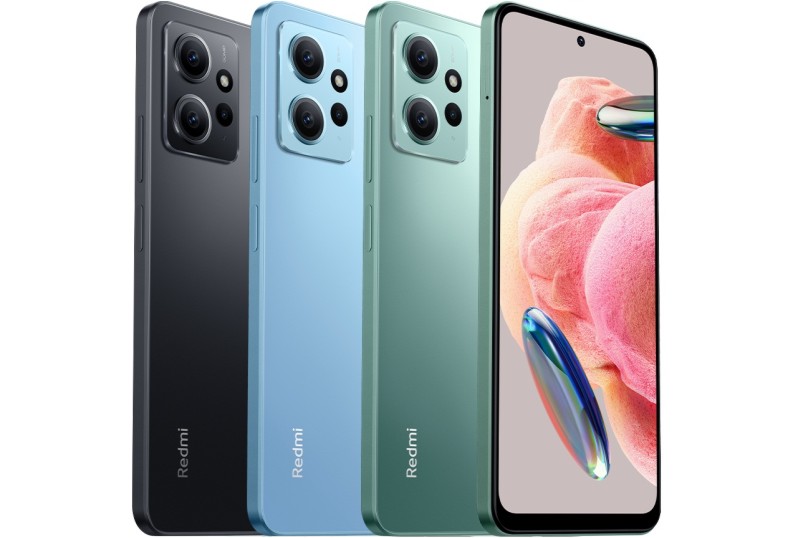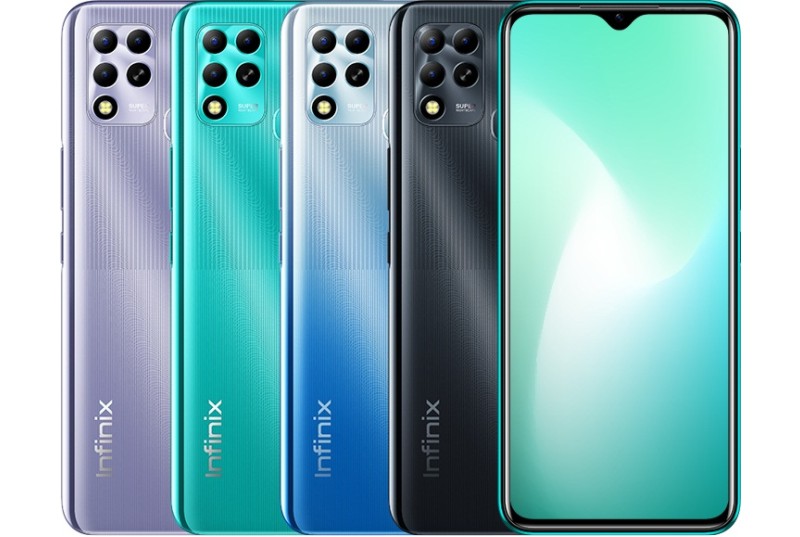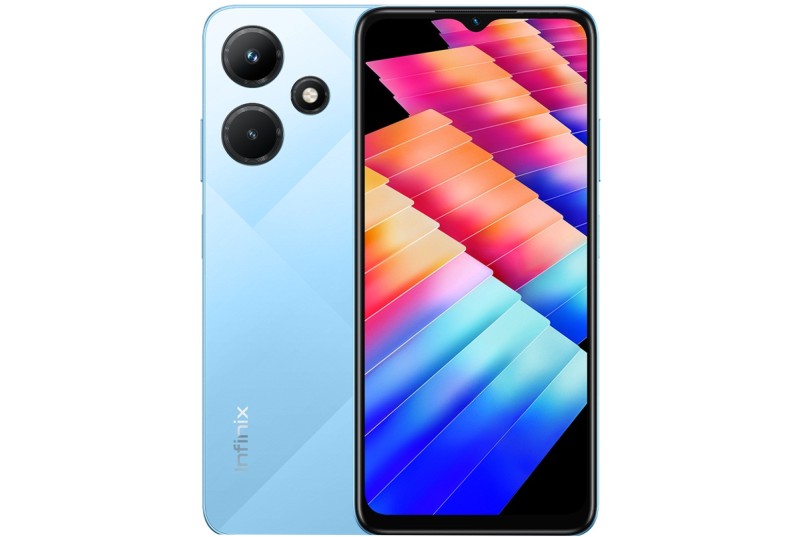Infinix Hot 40 (X6836) Review, Price And Specifications.
Infinix Hot 40 (X6836) Quick Specs:
Display: 6.78" Full-HD+ (2460×1080) 90hz IPS-LCD Infinity-O Display.
Software: Android 13 OS, XOS 13.5 Skin.
CPU: Helio G88 (12nm).
RAM: 8GB (Up to 16GB through Virtual RAM).
Storage: 256GB (expandable up to 1TB).
Rear Camera: Triple-lens (50MP+2MP+QVGA).
Front Camera: Single-lens (32MP).
Security: Side-mounted fingerprint reader, Face Unlock.
Port: USB Type-C.
Network: 4G (LTE).
Speaker: Stereo.
Battery: 5,000mAh.
Charging Speed: 33W.
Starting Price:
₦220,000, UGX 695,000
Infinix Hot 40 (X6836) is the regular version of the recently unveiled Infinix Hot 40 Series. The more equipped version is the Infinix Hot 40 Pro (X6837). However, putting them side by side, they both look identical. They both have identical hole-punch displays, and their back covers also look alike. Even specs-wise, they have a lot in common. In fact, the only three things that distinguish the Hot 40 Pro from the regular Hot 40 are its higher megapixel rear camera, more powerful CPU, and faster charging speed. Otherwise, all the other attributes of the phone remain as those of the regular model.
In addition to the Hot 40 and Hot 40 Pro, there's also Infinix Hot 40i (X6528). However, the Hot 40i is the cheapest off all the three phones and it is slightly smaller. Also as expected, Hot 40i is powered by a low-end CPU and its camera system is basic.
Meanwhile, although Infinix Hot 40 (X6836) offers a few upgrades, it preserves most of the key features of the Infinix Hot 30 (X6831). For instance, the phone has a 6.78-inch Infinity-O display and a 50MP main rear camera as the earlier phone. It's also pre-installed with Android 13 OS, and packs 8GB of RAM and Helio G88 CPU too.
Among the upgraded features of the latest phone is its higher or 32MP front-facing camera. Which enables the phone to capture a more detailed and true to life selfies than its predecessor. Even despite having the same primary rear camera, photos taken with the Hot 40 look more better. In addition to that, the number of rear cameras has been increased from two to three on the latest phone.
And despite running on the same Android version as the earlier phone, Hot 40 features the latest version of Infinix custom UI. Reverse Wired charging is another features that's missing on the Hot 30 but present on the Hot 40. However, unlike the Hot 30 that's available in two storage options of 128GB and 256GB, Hot 40 is available in only one storage option of 256GB.
Furthermore, while the front of the Hot 40 looks exactly like that of the Hot 30, the back of the new phone looks different. For instance, the new phone has a camera bump; which was missing on its predecessor. The phone also has a plain and smooth to touch back cover. But the camera rings are arranged in a manner that's similar to that of the earlier phone.
And despite having two speakers like the earlier model, Infinix Hot 40 has its second speaker placed on the top edge, unlike that of the Hot 30 that's directly placed above the selfie lens. This enables Hot 40 to have better audio output than the earlier phone.
Still, except for those modifications and aforementioned small upgrades, most of the other features of the Infinix Hot 40 remain as those of the Hot 30.
Compared to the contenders, Infinix Hot 40 wears a more premium looks and delivers better looking selfies. The amount of RAM and storage space that came with the main contenders are also lower. The maximum charging speed of those phones are also lower than that of the Hot 40. The contenders also lack the Infinix phone's Reverse Wired charging.
And in spite of all those selling points, Infinix Hot 40 still has other important features that are expected of a phone at this price point.
However, there are compromises. Firstly, the Helio G88 CPU that powered this phone is less beefier than the contenders CPUs. The main contenders also come with recent Android version. And they promise future Android OS updates too; something you don't get on the Hot 40.
Furthermore, and in spite of its premium design and good build quality, the build qualities of the main contenders are slightly or more better.
Notwithstanding, as a result of all of its all-encompassing features, Infinix Hot 40 offers better values for money than the competitions.
Price And Colour Design:
Infinix Hot 40 sports a nice looking glossy finish. And it is available in five colour options of Starlit Black, Palm Blue, Horizon Gold, Starfall Green and Free Fire. Currently, the starting price of the phone is about 220,000 Naira.
The Contenders:
Tecno Pova 6 Neo is powered by a more powerful Helio G99 Ultimate CPU and has a much stronger 7,000mAh battery. This Tecno phone is even running on the recent Android 14 OS. Yet, it has the same 8GB of RAM. Although Pova 6 Neo also has a 6.78-inch display as the Hot 40, it features a 720p resolution. Pova 6 Neo also features a low quality 8MP front-facing camera. Even despite having the same 50MP main rear camera as the Hot 40, photos taken with the Infinix phone look more life-like and clearer. Pova 6 Neo also offers half (128GB) of the internal storage space of the Hot 40. By the way, except for its different looking back cover, Pova 6 Neo wear the same looks and comes in size of Hot 40.
Samsung Galaxy A15 is equipped with the same powerful CPU as the Pova 6 Neo, but the phone has a regular 5,000mAh battery as the Hot 40. Still, the Samsung phone is running on the same Android 14 OS as the Pova 6 Neo. Even, unlike the Tecno phone, Galaxy A15 comes with an assurance of future OS updates. Also while both of the Pova 6 Neo and Hot 40 displays have IPS-LCD panels, the display of the A15 has an AMOLED panel. Photos taken with the Samsung phone rear camera are also as nice-looking as the ones taken with the Hot 40. Selfies taken with the A15 also look good. But the version of the A15 that attract almost the same price as the Hot 40 features a slightly lower 6GB of RAM and 128GB internal storage.
Also the version of the Redmi Note 13 that attract the same price as the Hot 40 has the same 6GB of RAM and 128GB inbuilt storage as the Galaxy A15. Still, like the Samsung phone, Redmi Note 13 features an AMOLED display. Even despite that the Redmi phone is pre-installed with the same Android 13 OS as the Infinix Hot 40, there's an assurance of future OS updates for the Redmi phone.
Also compared to the Helio G88 CPU of the Hot 40, Redmi Note 13 is equipped with a slightly better Qualcomm SD685 CPU. But the Snapdragon CPU is a little less powerful than the Helio G99 Ultimate that come with both of the Galaxy A15 and Tecno Pouvoir 6 Neo.
However, selfies taken with the Note 13 fall shorts of the ones from both of the Hot 40 and Galaxy A15. But the qualities of the Redmi rear camera shots are similar to those of the two phones.
Premium Design:
Infinix Hot 40 is a premium looking phone. Its frame and back cover has an attractive metallic or semi-glossy finish. Though, as expected of a phone at this price point, the back cover and frame of the Hot 40 are made of plastics, yet the phone has a good build quality and feel sturdy at hand. But, due to its large size, people with small hands may find it a little uncomfortable to hold with one hand.
Also despite that it has a good build quality, still as i mentioned earlier, Galaxy A15 and Redmi Note 13 offer slightly better build qualities. Unlike that of the Hot 40, for instance, the front of the two phones are protected with Corning Gorilla Glasses. Even the Redmi phone is IP53 (splash and dust resistance) certified. But A15, like the Hot 40, has no IP rating.
And talking about the overall looks. Though Hot 40 appears slightly more premium than the two phones, but the front of the phone look less sleeker than that of the Note 13 (which also features a similar hole-punch display). The sleeker looks of the Redmi phone is as a result of its smaller camera cut-out and slimmer bottom bezel or chin. On the other hand, Galaxy A15 comes with a U-shape notch display. As a result, the Samsung phone looks look a little less appealing than both of the Hot 40 and Note 13. A15 also comes in a more compact or smaller size. But it has a wider aspect ratio than both of the two phones.
Meanwhile, expect for its camera bump, the repositioning of second speaker and plain back cover, all other features of the Hot 40 remain as those of the Hot 30.
Therefore, on the bottom edge of the Hot 40 is a 3.5mm audio jack, a microphone, a USB Type-C port, and the phone's primary speaker. The secondary speaker, as i said, is placed on the top edge of the phone. Except for that speaker, there's nothing again on the top edge of the phone. As usual, you have the volume keys and power button (which also doubles as a fingerprint reader) on the right edge of the phone, while its 4G dual Nano-SIM+microSD card slot (and tray) is located on the left edge.
Same Nice-Looking 6.78-inch 90Hz Full-HD Display:
Apart from having the same size, the IPS-LCD display of the Hot 40 also preserves the 396ppi pixel density or Full-HD+ (1080x2460) resolution of the Hot 30 display. It also support the same 90Hz screen refresh rate (for smoother gaming, page scrolling, and swiping). The screen also retain the high Touch Sampling rate of the earlier one. Which means the screen is more responsive to touch than the regular ones.
Furthermore, the display also maintain the crispness, clarity and nice colour reproduction of the earlier one. Though the display colour gamut is not as high as those of the AMOLED panels of the Redmi Note 13 and Galaxy A15, and neither as vibrant. Still the colour gamut of the Hot 40 screen is on the high side too. And colours are rich and vivid. In short, just like the one on the Hot 30, the screen of the Hot 40 looks more appealing than most of other budget phone with similar IPS-LCD panels. Still, among the few pretty IPS-LCD displays that i've seen and that rivals that of the Hot 40 is hair bigger 6.79-inch IPS-LCD display of the less expensive Xiaomi Redmi 13.
Meanwhile, as the screen inherit the strong side of its predecessor, it also inherit its not so strong side. Which is brightness. The peak brightness of the Hot 40 display is about 500nit. Which is, though, more than okay for normal lighting conditions or indoor usage, but under direct sunlight, you'll struggle a little to see what's on this screen. Again, the screen is impressively bright enough for most lighting conditions.
Overall, the big screen of the Hot 40 is really good for playing games, watching videos, and streaming media contents. Adding to this is the fact that the phone has two impressively loud speakers.
Impressive Photography:
As i said before, Infinix Hot 40 comes with a 32MP selfie lens; a notable upgrade from the 8MP selfie lens on the Hot 30. Infinix also introduces 2MP Macro sensor (for taking detailed pictures of close-up objects) to the initial 50MP main sensor and AI sensor on the back of the earlier phone. In other words, Infinix Hot 40 comes with triple rear camera.
Perhaps, as a result of the same primary rear camera, Hot 40 was able to maintain nice looking photos of its predecessor. Photos are sharp, noticeably detailed, and clear. Colour representation is good too. Colours are vibrant and moderately saturated. Even the level of brightness and contrast on the latest phone camera is more balanced. Which makes the HDR shots from the Hot 40 look better than the ones from the Hot 30. Portrait shots also have better subject separation. Night Mode shots from the latest phone also have lesser noise. However, to get the best looking shots from this phone, you need to take the shots in well lit environments. In other words, the camera of the Hot 40 don't do well in low-light conditions.
For a budget phone, Selfie from the Hot 40 look quite impressive. Selfies are clear, detailed and vivid. Colours are true to life, vibrant, yet moderately saturated. Skin tone look nice too. Portrait selfies also look good, so also HDR shots.
Even, compared to the ones taken with the competition, selfies from the Hot 40 stand out. In fact, i prefer the selfies from this Infinix phone to the ones taken with Samsung Galaxy A15; which also captured nice looking selfies. But photos taken with the rear cameras of the A15 and Redmi Note 13 are as nice looking as the ones from this Infinix phone..
Meanwhile, both of the front and main rear camera of the Infinix Hot 40 can shoot videos up to 2K at 30fps (frame per second). And there's no Video Stabilization.
Same OS, Same CPU, But latest Custome UI:
As i mentioned, Infinix Hot 40 is pre-installed with Android 13 OS like its predecessor. But the phone is running on the OS with the new XOS 13.5 Skin on top. The new custom UI offers a few interesting features like Split-Screen, Suggestion, Folax and Magic Ring. To me, Magic Ring is the notable ones among them.
Magic Ring allows you to transform the cut-out area on your phone's display and make it look like that of the iPhones' Dynamic Island. To do this, Magic Ring has to be toggled ON in the phone's display settings. Afterwards, and whenever you plugged in your phone to charge, or receive notifications, the selfie cut-out will be transformed to a pill shape or cylindrical cut-out.
Talking about Hot 40 performance. The Helio G88 CPU that powered this phone is a 12nm mid-range gaming chipset. Although it is not as robust as the 6nm Helio G99 and Qualcomm SD685 that come with the Galaxy A15 (or Pova 6 Neo) and Note 13 respectively, when it comes to day to day usage and regular tasks, Hot 40 is as swift and as responsive as those phones. It moves in-between apps quickly and plays average (or mid-end) games without stress.
However, as expected, the phone is not as smooth as the Galaxy A15 and Pova 6 Neo when it comes to heavy multi-taking and graphics demanding games. And to play demanding games smoothly on the Hot 40, you need to drop their frame rates and put their graphics settings at medium.
Meanwhile, the only 256GB inbuilt storage option of the Infinix Hot 40 can be expanded, like that of its predecessor, up to 1TB (Terabyte) via microSD card. Also the default 8GB of RAM of the phone can be increased up to 16GB through MemFusion or RAM Virtualization.
Same 5000mAh Battery And 33W Charge, But Reverse Wired Charging:
Infinix Hot 40 has a 5,000mAh battery and supports 33W fast charging like its predecessor. The phone also has a 33W faster charger and a USB to Type-C cable in its box. As i said before, Infinix Hot 40 support Reverse Wired charging. This features enables you to use your Hot 40 as a Power Bank to charge another phone.
Meanwhile, with its 33W fast charger, it will take you about one and half hour to fully charge the phone's battery from zero percent. However, the Reverse Wired charging speed is much slower.
Infinix Hot 40 (X6836) Full Specs:
GENERAL
Maker: Infinix Mobility.
Name: Hot 40 (X6836).
Year Released: December, 2023.
Dimensions: 168.6x76.6x8.3mm
Weight: 197g.
IP Rating: None.
Colour: Starlit Black, Starfall Green, Palm Blue, Horizon Gold & Free Fire.
DISPLAY
Screen Type: IPS-LCD Capacitive Touch-screen.
Screen Type: IPS-LCD Capacitive Touch-screen.
Size and Resolution: 6.78-inch, Full-HD+, 2460-by-1080 pixels.
Aspect ratio & Pixel Densities: 19.5:9, 396PPI.
Refresh Rate: 90Hz (Max), 270Hz Touch Sampling Rate.
Protection: No.
PORTS:
3.5mm Audio Jack: Yes.
USB Type-C Port: Yes.
Micro-USB port: No.
Lightning Connector: No.
Google Assistant Button: No.
PERFORMANCE
Chipset: MediaTek Helio G99 6nm Octa-Core Processor, 2.2GHz.
GPU: Mali-G57 MC2.
RAM: 8GB (With up to 8GB of Virtual RAM).
Operating System: Android 13, XOS 13.5.
STORAGE
Internal Storage: 256GB.
Micro-SD card slot: Yes, up to 1TB (One Terabyte).
SIM AND NETWORK
SIM: Nano, Dual SIM slots.
Network: GSM, HSPA+, & LTE.
CAMERA
Rear camera: Triple-lens; 50MP (Wide)+2MP (Macro)+AI (Auxiliary), Quad-Flash.
Front camera: Single-lens, 32MP+ Front Flash.
VIDEO RECORDING:
Rear Cameras: 720p, 1080p, 2K @ 30 fps.
Front Camera: 720p, 1080p, 2K @ 30 fps.
CONNECTIVITY:
Wi-Fi, Bluetooth 5.3, HotSpots, USB-OTG, NFC.
BIOMETRIC, SENSORS & LOCATION:
Security: Face Unlock, Side-mounted Fingerprint Reader.
Sensors: Ambient light sensor, Proximity sensor, G-sensor, Accelerometer And
Barometer sensor
Others: GPS, Location (Geo, Glonass).
BATTERY
Battery Capacity: 5,000mAh.
Reverse (Wired) Charging: Yes.
Qi Wireless-Charging: N/a.
Fast Charging: 33W (Wired).


.jpg)





